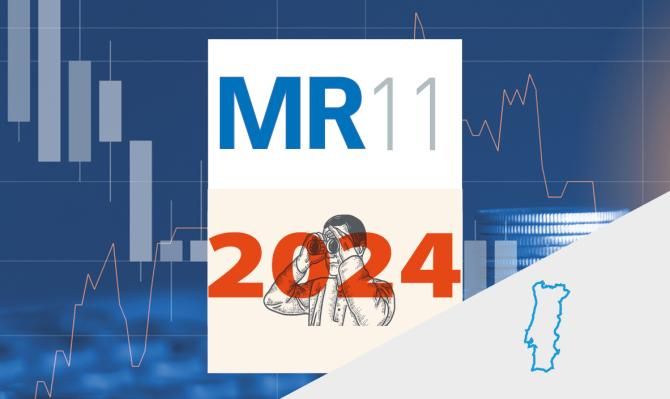As this is a flash indicator, the breakdown by component is not yet known, but the National Statistics Institute points to the weakening of economic activity among Portugal’s trading partners as the main factor, as this would have weighed down exports of both goods and services, including tourism. However, the production shutdown and resulting suspension of exports from the Auto-Europe factory during two weeks of the quarter will also have had an impact. For Q4, the available information is still very limited: on the upside, the Bank of Portugal’s daily economic activity indicator recorded an average year-on-year growth of 3.9% in October, compared to 2.7% in Q3. On the downside, the sentiment indicators for October show a deterioration in confidence among economic agents. The data published to date suggest a moderation in the pace of economic growth and pose significant risks to our forecast scenario (GDP growth of 2.4% in 2023 and of 1.8% in 2024).

According to the National Statistics Institute’s estimate, the headline CPI surprised analysts by falling sharply in October to 2.1%. This is 1.5 pps below the September figure and marks the first time the index has fallen below 3% since December 2021. The core index, meanwhile, also continued to moderate, reaching 3.5% (4.1% in September). In any case, these encouraging figures were driven by base effects, particularly in the energy index, so we cannot rule out a rebound in inflation at the end of the year. On the other hand, the effect of monetary policy is beginning to weigh more heavily on demand and a slowdown in the price of services is likely after the summer season.

Given the strength of the home price index in Q2 2023, we have revised upwards our forecast for 2023 as a whole and now expect an average increase of 7.1% in 2023, compared to the 4.0% previously forecast. Despite the fall in the number of home sales (–22.9% compared to the same quarter of 2022), the market remains supported by low unemployment, strong demand from non-residents and budgetary measures aimed at accommodating the increases in credit. In any event, the effect of a prolonged monetary adjustment and of government measures aimed at boosting the housing supply ought to help stabilise prices in the medium term.
The consolidated general government current account balance to September shows a surplus of 3.7% of GDP, marking an 80-pp improvement compared to the same period last year. This trend has been supported by a significant increase in current revenues (8.5% vs. 6.8% in the case of expenditure), reflecting the strength of the labour market and the positive tone in consumption. This improvement in the national accounts leads us to revise our forecast for the budget balance in 2023 to a surplus of 0.7% of GDP, bringing the public debt ratio down to 103% of GDP.

